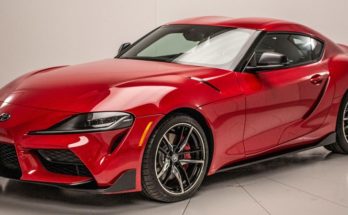Carrie is perhaps the most famous of Stephen King’s stories about a killer car. The car used in the novel was a Plymouth Fury, though the evil entity had less to do with the type of vehicle and more to do with spiritual entities. That being said, the Fury has figured in several stories, from film to video games (the 1957 Plymouth Fury made an appearance in the Grand Theft Auto franchise). Wherever you know the Fury from, you know what an eye-catching automobile it was, complete with bold colors, distinctive tail-fins, and a gigantic body in which to house its growling V8 engine.
Originally a subset of the Plymouth Belvedere line, the Fury quickly worked its way to the top as both a mid-size and a full-size sedan. The first generation was offered with twin 4-barrel carburetors, gold-anodized aluminum trim, and came in two colors: white or beige. Subsequent generations suffered from lack of quality control, but not to the extent of shuttering the model in favor of other styles.
A Sports model appeared just a few years after the original model was produced, and came in two styles, the two-door hard top and two-door convertible, as opposed to the original Fury’s styles, which included a two-door hard top, four-door sedan, or station wagon. An alternative vehicle that was based on the Fury arrived in Canada in the late 1950’s. It was known as the Dodge Viscount, but was a short-lived experiment, lasting only a year.
The 1960’s were a decade of innovation for the Plymouth Fury. It began with the first unibody construction (previously vehicles were mostly body-on-frame which meant that the parts were bolted onto the frame, or chassis. The unibody construction idea was that the body and frame were combined into one piece), then the tail-fins were removed, and the vehicle was produced as a mid-size model instead of the full-size sedan, though popular opinion swayed the designers to go back to a full-size in the mid 1960’s.
The Plymouth Fury changed generations in the 1970’s from the fifth to sixth to seventh generation, as well as going through several name changes and body configurations, from full-size to mid-size again, with the various names including “The Road Runner”, “The Plymouth Gran Fury”, to the “Plymouth Caravelle” label used in Canada. In 1979, however, there were no Plymouth Furies to be found at all on the market.
While the car did manage to last through the 1980’s, its demise was clear for all to see. A Dodge Dart body was recast as another version of the “Plymouth Gran Fury” though its main audience was not the general populace but rather the police force. The Plymouth Fury bowed out of production in 1989, after almost 30 years on the market.
You can also locate a copy of Carrie at your local library if you’re into Stephen King’s vision of killer cars.
 " >
" >


